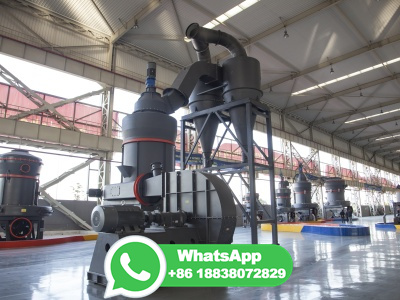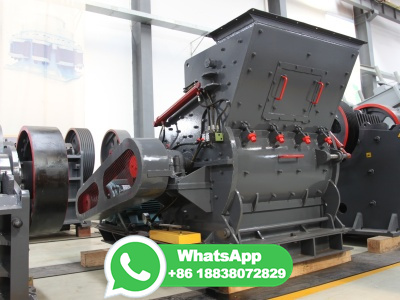
Portland Cement Manufacturing Process Description17 Portland cement is a fine powder, gray or white in color, that consists of a mixture of ... directfired coal, oil, or gas burners, the most efficient and widely used source of heat for drying is the hot exit gases from the pyroprocessing system.
WhatsApp: +86 18203695377
To address a decarbonized cement production process (DCPP), a calcium looping process is connected to an industrial cement production process (CPP) for capturing CO2 by ~96%. Since the captured CO2 purity is up to wt%, the carbon capture and utilization (CCU) process is connected to generate the additional products of urea and methanol. An integration of DCPP and CCU, named the DCPP ...
WhatsApp: +86 18203695377
Cement manufacturing is an energy intensive process where coal is the main energy source. Replacement of coal with refuse derived fuels (RDF) will reduce costs and CO2 emissions as RDF is partly carbon neutral. In modern cement kilns, most of the calcination (CaCO3(s) CaO(s) + CO2)
WhatsApp: +86 18203695377
Cement manufacturing process Download as a PDF or view online for free. Submit Search. Upload. Cement manufacturing process. Report. Share. Shreenath Bohra. Follow • 225 likes • ... Recycling Programs Energy Replacement for Coal/Coke. • Liquid fuels. • Solid fuels. Material Replacement for Raw Materials (Limestone, Shale and Sand).
WhatsApp: +86 18203695377
The model for the ILC type of cement production has been proposed for thermodynamic analysis (Rahman et al., 2014; Zhang et al., 2011). In this work, a similar model is developed with several additional assumptions added to reduce the model's complexity without affecting the energy balance of the cement production process.
WhatsApp: +86 18203695377
Cement production is a highly energy intensive process and has traditionally depended mainly on coal as fuel. Compared to a global coal production of around Gt in 1999, coal use in power and heat stations amounted to Gt whereas the nonmetallic minerals industry, which includes cement production, used only about Gt (IEA, 2001). The ...
WhatsApp: +86 18203695377
Cement Clinker CO2 mitigation Kiln Waste Disposal Introduction The cement industry is highly energy intensive, consuming ∼ 15% of total energy demand [1] and responsible for 26% of total industrial CO 2 emissions [2].
WhatsApp: +86 18203695377
The process relies on "carbon upcycling"—using CO2 emissions captured from industrial activities to produce a cementlike, and potentially carbonneutral, building material. The CO2NCRETE ...
WhatsApp: +86 18203695377
The data of the manufacturing process is adopted from a reference cement plant with clinker productivity of 3000 t/d in the EU Horizon 2020 project "CO 2 capture from cement production" . Coal is selected as fuel in the modeling in line with the current cement industry in China.
WhatsApp: +86 18203695377
Introduction Fossil fuels such as coal, petroleum and natural gas provide most of the energy needs of the world today. Coal and natural gas are used in their natural forms, but petroleum and other fossil fuels such as shale and bituminous sands require distillation and refinement to give usable fuels.
WhatsApp: +86 18203695377
Clinker is mixed with gypsum and ground to a fine powder to make cement. Coal is used as an energy source in cement production. Large amounts of energy are required to produce cement. Kilns usually burn coal in the form of powder and consume around 450g of coal for about 900g of cement produced.
WhatsApp: +86 18203695377
Cement manufacturing is a complex process that begins with mining and then grinding raw materials that include limestone and clay, to a fine powder, called raw meal, which is then heated to a sintering temperature as high as 1450 °C in a cement kiln. In this process, the chemical bonds of the raw materials are broken down and then they are ...
WhatsApp: +86 18203695377
No, shredded tyres cannot be used on lime kilns. Lime kilns require a burnable fuel like coal, gas, or oil and cannot burn rubber materials like shredded tyres. The portland cement production process is extremely energy intensive (from 4 to 6 million Btu's (MMBtu's) are required to make a ton of product) therefore,
WhatsApp: +86 18203695377
that were consumed in 2000 for quarrying, cement manufacturing, and concrete production. Cement manufacturing requires very high temperatures, 2,700°F (1,500°C), to initiate the reactions and phase changes necessary to form the complex mineral compounds that give cement its unique properties. Pyroprocessing in
WhatsApp: +86 18203695377
Cement production is an energyintensive proc ess consuming thermal energy of the order of GJ/tonne of clinker produced, which accounts for 30 40 percent of production costs (Giddings et al., 2000; EC, 2001). Worldwide, coal is the predominant fuel burned in cement kilns. Cement production consumes approximately 120 kg of coal per tonne of ...
WhatsApp: +86 18203695377
Cement is so fine that 1 pound of cement contains 150 billion grains. The cement is now ready for transport to readymix concrete companies to be used in a variety of construction projects. Although the dry process is the most modern and popular way to manufacture cement, some kilns in the United States use a wet process.
WhatsApp: +86 18203695377
The cement production process begins with the extraction of limestone and clay from the quarry. The material is then blended, crushed and fed to the kiln. Postkiln, the clinker is cooled and goes through a final grinding method before it is ready to ship. Portland cement, the most common type of cement, is formulated in a variety of strengths ...
WhatsApp: +86 18203695377
Today, Portland cement is made by heating limestone and clay or other materials in kilns, a process responsible for about 8% of global CO 2 emissions (% of global greenhouse gas emissions ...
WhatsApp: +86 18203695377
Cement industry is estimated to account for ~67% of anthropogenic CO2 emissions globally. Therefore, the identification of innovative solutions for their mitigation is both a priority and a challenge. The integration of carbon capture and storage technologies into the industrial production process is considered among the most viable solutions for this purpose, and calcium looping (CaL ...
WhatsApp: +86 18203695377
Cement production is a highly energyintensive process. Cement making consists of three major process steps: raw material preparation, clinker making in the kiln, and cement making. Raw material preparation and cement making are the main electricityconsuming processes, whereas the clinker kiln uses nearly all of the fuel in a typical cement plant.
WhatsApp: +86 18203695377
The basic chemistry of the cement manufacturing process begins with calcination, the decomposition of calcium carbonate (CaCO 3) at about 900 °C to leave calcium oxide (CaO, lime) and liberate gaseous carbon dioxide (CO 2).This is followed by the clinkering process in which the calcium oxide reacts at high temperature (typically °C) with silica, alumina and ferrous oxide to form ...
WhatsApp: +86 18203695377
Cement plants strive for consistent raw material quality with minimal chemistry deviation to ensure stable process operations, minimize production costs and meet product specification. Continual monitoring and control of mining operations, stockpile blending and raw material proportioning helps cement producers optimize quarry lifetime, reduce ...
WhatsApp: +86 18203695377
The main drawback of the recycled cement production process is the pretreatment stage related with washing and drying of waste materials. The carbon dioxide emissions from recycled cement production can be potentially reduced to only 13% of the emissions from clinker production, if these pretreatment stages are avoided by developing a dry process.
WhatsApp: +86 18203695377![How is Cement Made? [2023] Specifier Australia](/s0j6hgr/99.jpg)
This is the first step in the cement manufacturing process and making a portland cement clinker or starting material for blended cement which contain less than 30% clinker. After the raw material is heated, it flows through a rotary kiln that reduces it to powdery pieces. ... Blast furnace slag and coal ash used in wet process plants increase ...
WhatsApp: +86 18203695377
The process of cement production involves the #kiln, a large cylindrical #furnace where raw materials are heated at high temperatures. Coal, along with other fuels such as #petroleumcoke,...
WhatsApp: +86 18203695377
This article summarizes the arguments surrounding the scientific discussion of the cement production process at a selected company in Slovakia. (1) The main goal of this article is to evaluate the quality of the cement production process with the intention of increasing the performance and quality of the process and the quality of the cement in various assortments. The object of this research ...
WhatsApp: +86 18203695377
Cement production also has a significant contribution to environmental degradation originating both from anthropogenic pollutant emissions and mining activities of raw materialsand coal,which isthemostusual sourceofenergyin the cement plant. In this way, it contributes to about 5 to 8% of anthropogenic GHG emissions [13, 14, 21]. These emissions
WhatsApp: +86 18203695377
Growing awareness of the importance of mitigating climate change is driving research efforts toward developing economically viable technologies for reducing greenhouse gas emissions. The high energy consumption and carbonintensive nature of cement manufacturing make it worthwhile to examine the environmental and economic characteristics of process improvements in cement production.
WhatsApp: +86 18203695377
The cement production process begins with the extraction of limestone and clay from the quarry. The material is then blended, crushed and fed to the kiln. Postkiln, the clinker is cooled and goes through a final grinding method before it is ready to ship. Portland cement, the most common type of cement, is formulated in a variety of strengths ...
WhatsApp: +86 18203695377
01 March 2016 Coal provides around 90% of the energy consumed by cement plants around the world, despite the environmental harm caused by its combustion. It takes 200 450kg of coal to produce 1t of cement. The cement industry consumes around 4% of global coal production, around 330Mt/yr.
WhatsApp: +86 18203695377
The cement production process comprises three main stages: raw material preparation, clinker combustion (pyroprocessing) and cement preparation [13]. ... (Coal) for their process and the kiln is the main energyconsuming stage in the entire cement production process. In South Africa, the energy consumption of cement plants varies considerably ...
WhatsApp: +86 18203695377
Considering cement manufacturing process, CO 2 emissions have been evaluated due to the use of electrical energy for (i) Initial grinding of raw materials ... MgO production when compared to that of PC is its effect on human health, which is attributed to the large quantity of coal used in the production of MgO. On the other hand, ...
WhatsApp: +86 18203695377
Among these three industries, CO 2 emission from cement production in 2000/01 was Gigagram (Gg), contributing 90% only from cement production (MoSTE 2014). Coal is the most used fuel source during the cement manufacturing process in Nepal (Madlool et al. 2013) and contributed to about 50% of CO 2 emissions (Hendriks et al. 2004).
WhatsApp: +86 18203695377